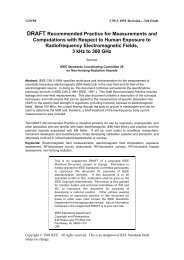An introduction to the quark model
An introduction to the quark model
An introduction to the quark model
You also want an ePaper? Increase the reach of your titles
YUMPU automatically turns print PDFs into web optimized ePapers that Google loves.
Few-charge systems His<strong>to</strong>ry of <strong>the</strong> <strong>quark</strong> <strong>model</strong> Mesons Baryons Multi<strong>quark</strong>s and o<strong>the</strong>r exotics Outlook<br />
Chromomagnetic binding<br />
Namely attractive and<br />
〈O〉H = 3 〈O〉Λ ,<br />
Thus with Λ = N = ΣΞ all receiving 150 MeV of attraction from<br />
spin-spin<br />
He deduced that H is bound by about 150 MeV below <strong>the</strong><br />
degenerate threshold ΛΛ = NΞ = ΣΣ,<br />
More than 20 experiments looked at <strong>the</strong> H<br />
No positive signal, in particular from S = −2 hypernuclei<br />
Chromomagnetism is remarkable, as it induces a net excess of<br />
attraction in <strong>the</strong> Hamil<strong>to</strong>nian, before considering any induced<br />
polarisation in sub-clusters,<br />
The usual situation is: no excess of attraction<br />
For instance Ps2 vs. 2 (e + e − ), both governed by gij/rij, both<br />
have <strong>the</strong> same gij = −2<br />
JMR Quark Model

















